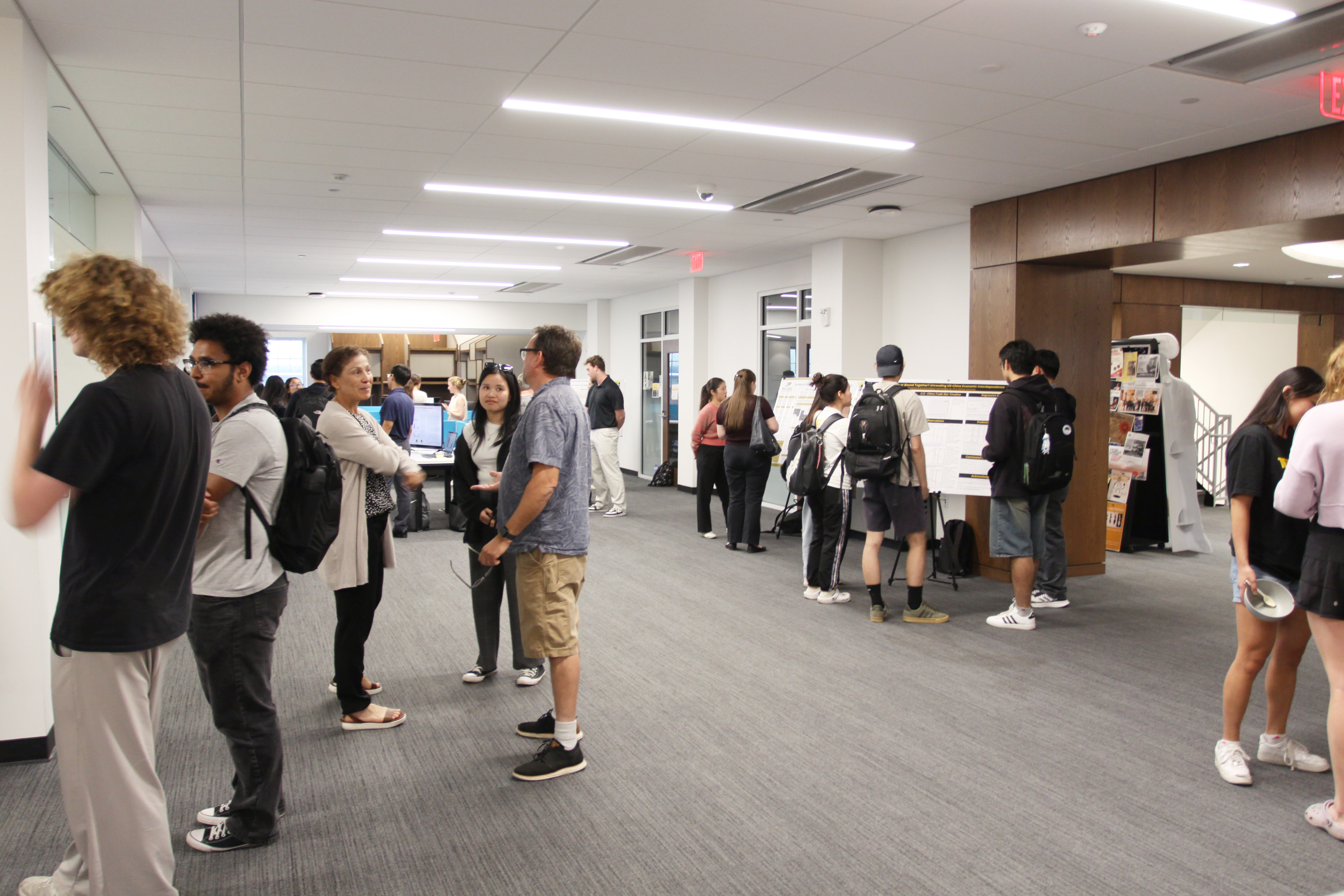Files
Download Full Text (1.3 MB)
Document Type
Poster
Publication Date
Fall 10-2020
Abstract
Synthesis of metal organic frameworks can result in different products based on the solvent that is used. One option is to use ionic liquids (ILs, or room temperature molten salts) to create novel metal organic coordination polymers. Our group analyzed metal organic polymers synthesized in ILs with the goal of cataloging the topology of the structures, the connectivity of the organic ligands, and the roles of the ILs in the syntheses. We used Sci-Finder Scholar to find papers where compounds were synthesized using ILs, and determined whether the IL played the role as the cation, anion, or neither in the resulting structures. We used the program Conquest to search databases for structures we identified through SciFinder and then created custom figures using the program Mercury that we could then analyze and manipulate. With each paper that we analyzed, our goal was to create figures that highlight the structural features, and analyze them to understand the connections between the metal ions and the ligands. One of the structures worked on this summer was the molecule [BMIm]2[Nb6Cl12(NCS)6]. Pigorsch and coworkers synthesized the 3D bridged compound with an ionic liquid playing a unique role. In the synthesis, the ionic liquid [BMIm][PF6], is used as a crystallization medium, but also as a cation source to allow for the synthesis to occur. The final structure is a 3D structure that has metal-metal bonding, and is connected by weak H-bonds. In this paper, the ionic liquid played the role as a ‘medium’, but we looked at papers where the ionic liquid played a role in the formation of cations and anions as well. Another structure worked on this summer was [Mn2(ptptp)(suc)0.5(H2O)3] • Br • 0.5H2O synthesized by Qin et al. The structure is a 1D helical structure that forms 3D supramolecular networks through intermolecular forces. The ionic liquid, [RMI]Br (R= ethyl, propyl, butyl), acted as an anion source and a structure regulator that allowed for the formation of the helix with a ladder structure. After this summer, we plan to write a review paper incorporating these and other metal organic polymer syntheses using ionic liquids, using the figures we created to visualize our work.
Supervisor: Prof. Hilary Eppley, PhD
Recommended Citation
Husby, Natalie; Inoue, Akane; and Eppley, Hilary, "Visualizing and Analyzing Structures of Coordination Polymers Synthesized in Ionic Liquids" (2020). Annual Student Research Poster Session. 38.
https://scholarship.depauw.edu/srfposters/38




Funding and Acknowledgements
Natalie Husby, Akane Inoue, Hilary J. Eppley PhD
Department of Biochemistry, DePauw University, Greencastle, IN
Supported by: DePauw University Science Research Fellows Program